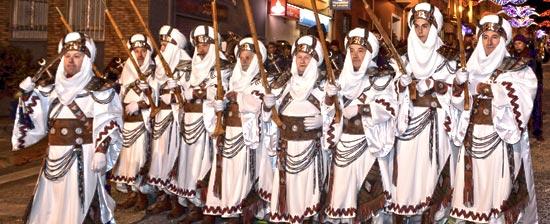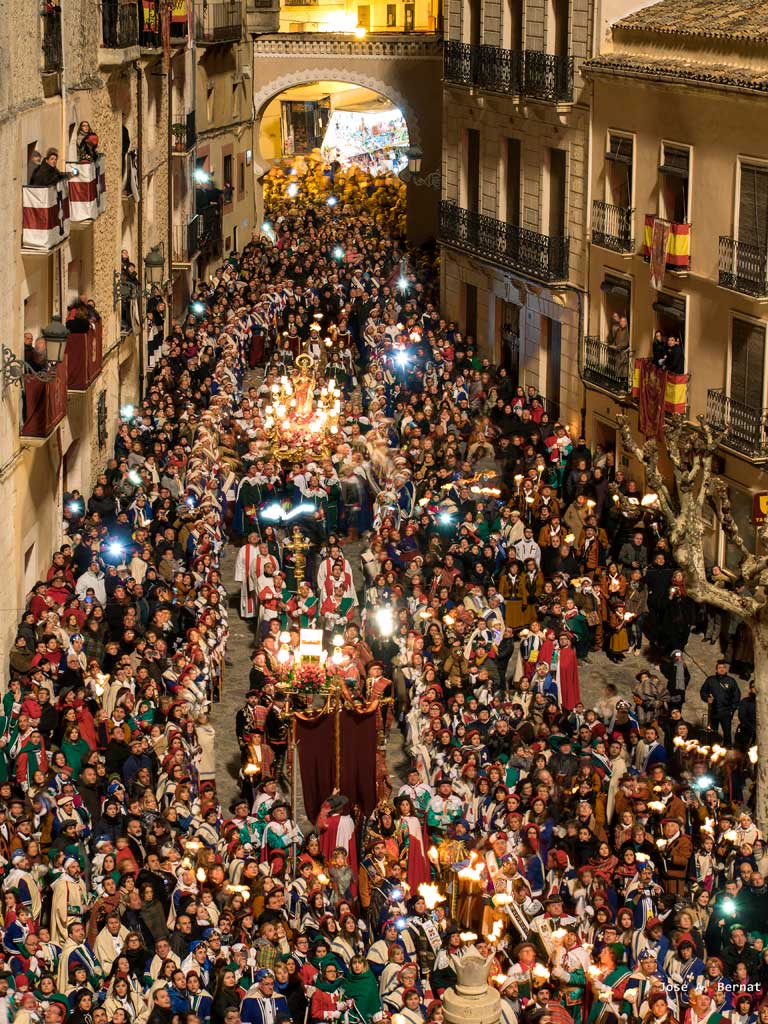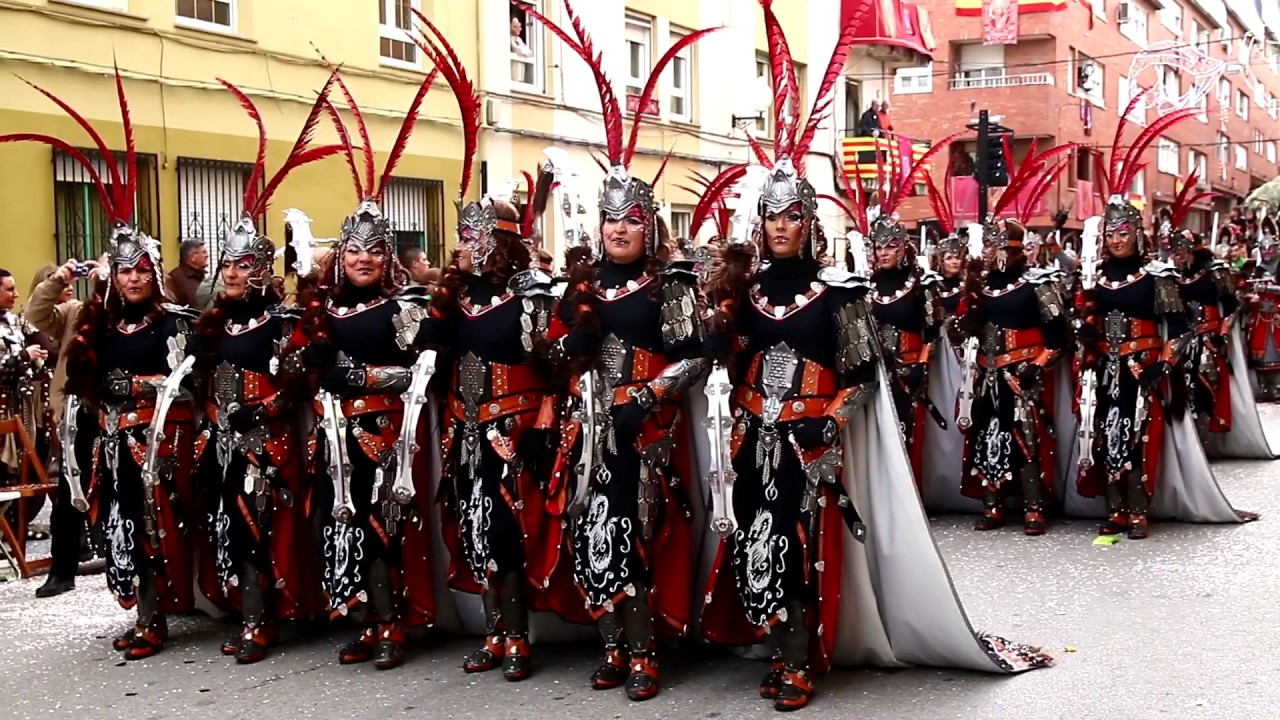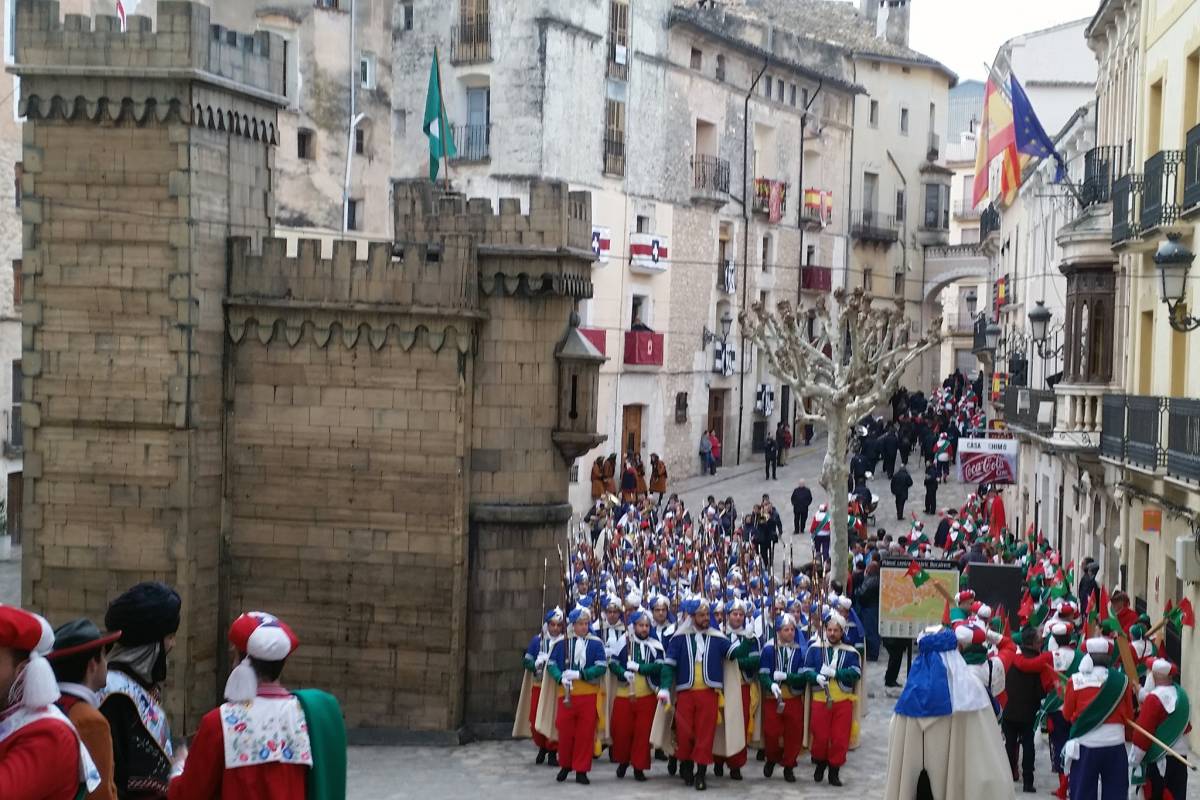Moors and Christians - Bocairent - 7 February
Tuesday, February 4, 2020

During the first week in February, Bocairent, in the province of Valencia, celebrates its Moors and Christians festivity in honour of Saint Blas, patron of the town. This particular Moors and Christians fiesta is one of the oldest and best in Spain. Fireworks, paso doble music and bands, spectacular parades, processions and the deafening sound of gunpowder are the main ingredients of this colourful six-day fiesta. A deep-rooted tradition full of colour and popular culture makes these the town’s most attractive celebrations.
 The highlight is the Entrà, when over 2,000 people participate in an amazing parade of floats. If you happen to be in the region you really must withness this fantastic festivity. Here are some of the key days:
The highlight is the Entrà, when over 2,000 people participate in an amazing parade of floats. If you happen to be in the region you really must withness this fantastic festivity. Here are some of the key days:
FRIDAY 7 February
LES CAIXES
With the “Night of the Drums” (“Nit de les Caixes”) the actual fiestas begin: hundreds of Bocairentines cloaked in their traditional woollen blankets take to the streets carrying Chinese lanterns and beating their drums, announcing the town’s patronage of Saint Blai since 1632.
SATURDAY 8
LA ENTRADA - Entrá
The “Entrance” (“Entrada”) of Moors and Christians on 2nd February brings the fiesta to life. First to enter are the Christians who parade to cheerful sounding pasadobles and once night-time falls the Moors enter to the slow and emotive tunes of Moorish marches.
SUNDAY 9
SANT BLAI
One of the most emblematic events of the fiesta is the procession on the day of Saint Blai; the entrance into the Town Hall Square of the saint, his relics and the banner of Saint Blai is particularly stirring, with the bells tolling and everyone shouting in unison: “Vitol al Patró San Blai” (“Long live Saint Blai”), as the lights go out and a shower of confetti rains down on the statue of the saint.

MONDAY 10
MOORS AND CHRISTIANS
“The Embassies” (“Les Ambaixades”) on the 4th of February are the representation of when the negotiations for the conquest of the castle between Mores and Christians are acted out. The enormous quantity of gunpowder fired off into the air along with the town’s main streets marks this day out as a special one.

TUESDAY 11
HOLY CHRIST
The day of Holy Christ (Santo Cristo) is also noteworthy due to the procession up to the chapel by participants and musicians, converting the Stations of the Cross footpath into a snaking line of colour.
 1
Like
Published at 5:59 PM Comments (0)
1
Like
Published at 5:59 PM Comments (0)